How can one not wonder about such a place?
Inevitably, my experience of the Faroes was brief and limited to Thorshavn, capital of the Faroes and, with a population of around 12,000, the largest town in the archipelago. However, Thorshavn was rewardingly charming and made for some delightful wandering in the limited time available. There's a small harbour that for centuries has been the main point of access to the town:

and next to the harbour there's the old settlement of Tinganes, where some of the still-inhabited turf-roofed houses are reputed to be up to 500 years old:
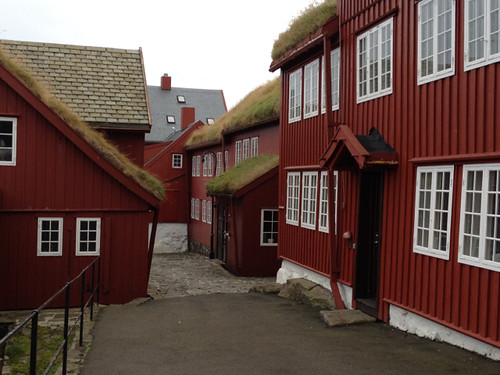
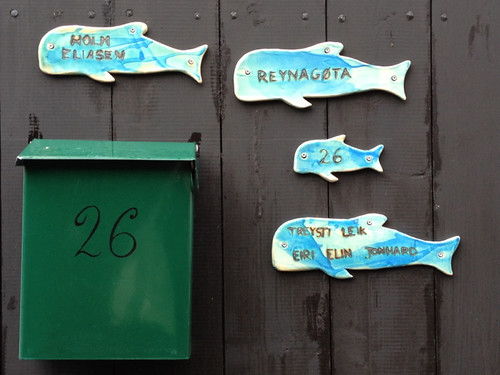

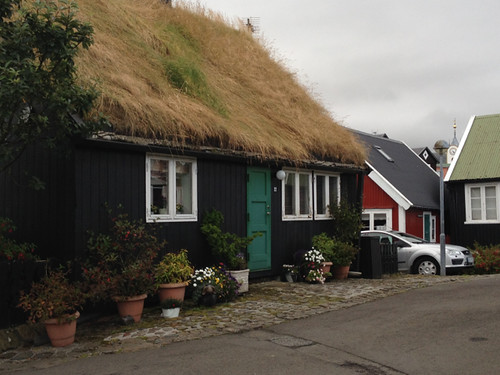
I was delighted to see that even some of the more modern houses on blocks of land rather than in the rambling old town had continued with the tradition of turf-roofed houses which must be efficient both for insulation and for protecting the roofs against the high winds that buffet the Islands for most of the year:
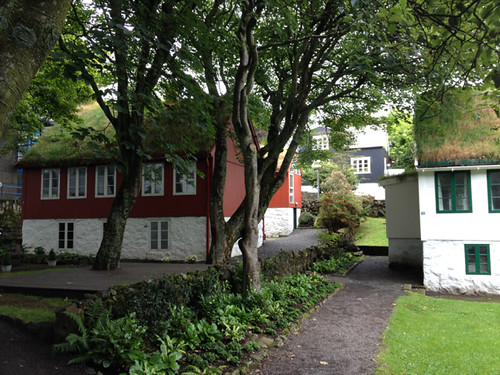
I'd become aware of the Island Wool Company, an on-line business that promotes and sells Faroese yarns, before I began my cruise and was hoping to be able to see some of the yarns in situ. We were fortunate to be able to visit the Navia shop where the Navia yarns that are one of the Faroese products are sold. (We were fortunate because we visited the Faroes on a Saturday afternoon, and almost all the Faroese shops close early on Saturdays. Navia's owner had kept the shop open for us - probably a wise move considering the amount of yarn purchased by our knitting group.) Navia is another inspiring story about keeping alive the wool and knitting traditions of a society. It began only in 1994 but has expanded to have distributors in many countries around the world. I bought some Navia Uno, a thickish laceweight yarn that's a combination of Faroese and Shetland wool and Australian lambswool:
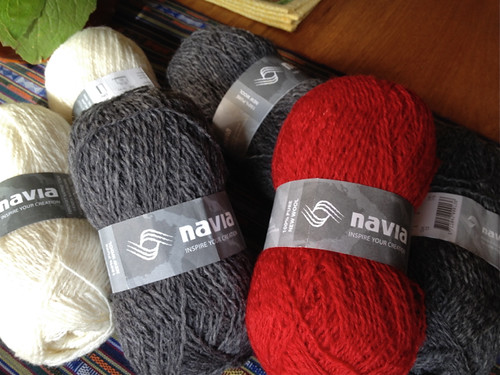
I used some of this yarn for my class projects and loved knitting with it.
And at a different shop, in the moments before it closed for the day, I purchased two skeins of Sirri yarn - another of the yarns promoted by the Island Wool Company.
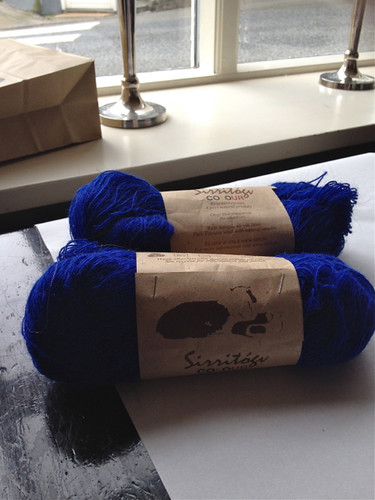
Sirri is 100% organic yarn from Faroese sheep that has not been chemically treated. Its producers describe it as having a 'rich' texture, which you can translate as hairy and sticky, with a high lanolin content. Yet again I bought laceweight (500 metres in a 100gr skein), imagining it knitted up loosely on large needles. We'll see.
It was only after our visit to cosy Thorshavn, when the ship was sailing away from the Faroes, that I had a glimpse of the rugged grandeur for which they are renowned. I need another visit to see more of the Faroe Islands.
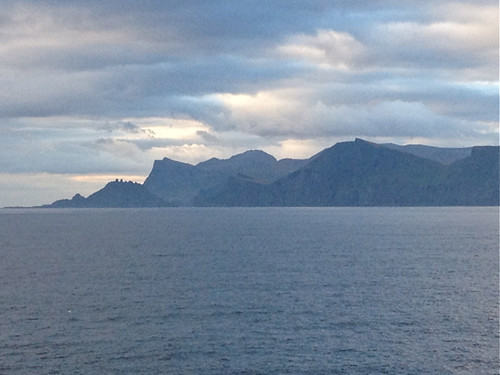
3 comments:
well thats disappointing about the shetlands, but i was so pleased to see you in the Faroes. they would have been more interesting to me too, maybe because of the jumpers and scandinavian crime tv! your sticky yarn chooses look amazing and i cant wait to see what you do with them. but yes, more faroes. and the shetlands next time too.
Oh my. Such a wonderful expeience. Are those sod-roofed homes wood? It appears either wood or siding. But I can't imagine wood lasting for that long.
I am so sad you missed the Shetlands. But it just means another trip, doesn't it, so you can revisit all these beautiful places and add the Shetlands in as well. I didn't know anything about the Faroes, so lovely to see just this bit.
Post a Comment